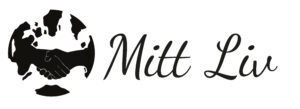
In my previous blog post, The environment is always on Evergreen’s agenda, I told you what Evergreen Line do to minimise the impact of their vessels. In this article, I will remain on course and discuss the possibility to optimise vessel navigation in eco-friendly ways.
Eco-friendly vessel navigation starts already in the design phase
To discuss the possibility to optimise vessel navigation in eco-friendly ways, let me take Evergreen’s ongoing building project of ten new B-type vessels as an example. The vessels will be about 211 meters long, 32.8 meters wide and have a design draught of ten meters. They will have a capacity of around 2800 TEU and be able to load thirteen rows of containers on deck.
To optimise the vessel navigation in an eco-friendly way, the hull form and propulsion efficiency are well conceived already in the design phase. The optimisation of the hull and propeller provides more favourable performance over the operating profile of draughts and ship speeds. It makes it possible to enhance fuel efficiency, save energy and reduce emissions in future vessel operations.
The new vessels are also equipped with electronic-controlled fuel injection engines. These engines comply with the IMO Tier II standards for nitrogen oxide emissions as well as the requirements of Energy Efficiency Design Index. This means that the vessels can reduce CO2 emissions by around 10 percent and NOX emissions by around 20 percent compared to traditionally designed vessels.
Careful planning of the voyage protects the marine environment
Leaving the example of Evergreen’s new vessels behind, and looking at vessel navigation from a wider scope, voyage planning is an important aspect. Poor voyage planning can lead to groundings, collisions and oil spills. With a voyage plan in place, it is possible to closely monitor the vessel navigation progress and the position of the vessel on the service route. This is important to efficiently transport the cargo considering depth, narrows, tide and currents while carefully protecting the marine environment.
Weather routing reduces negative effects on vessel navigation
Using weather routing is a great way to enhance the efficiency of fuel consumption on specific routes and achieve significant savings. By using the most updated weather information from the weather forecast service provider, ocean-going vessels can select the best route to reduce severe weather’s negative effects on the vessel navigation. The goal is often to find the best balance to minimise fuel consumption and time of transit.
Speed optimisation reduces unnecessary fuel consumption
Speed optimisation is another important factor. When departing from a port, the vessel sends a departure report to the shipping company as well as a daily noon report during sea passage. The company shore staff monitors the vessel speed and fuel consumption through a monitoring system. When an abnormal operation such as over speed or over fuel consumption is detected, the port captain in charge analyses the data and immediately informs the vessel to adjust the speed to match current ETA targets. With the help of slow steaming, it is possible to reduce unnecessary fuel consumption, save energy and reduce carbon emissions.
Just-in-time arrival contributes to avoiding unnecessary speeding up or waiting at sea
Communication is often a key, and so is also the case when it comes to vessel navigation and eco-efficiency. Early communication with the next port of call enables the vessel crew to receive a notice of berth availability and helps them to use optimum sailing speeds to approach the next port. It also allows the crew to calculate necessary engine RPM for the estimated arrival time, contributing to avoiding unnecessary speeding up or waiting at sea. Smoother port operations means that vessel can obtain more margin of lower speed and engine output, which in turn means lower fuel consumption.
Let’s care for the marine environment and ecosystem together!
I hope you found my article relevant and helpful. All of the above optimisations of vessel navigation are actions that Evergreen Line has taken to safeguard a sustainable development of the marine environment and ecosystem. To us, it is a matter of course that the vessels are equipped with various environmental protection devices and that we follow eco-friendly criteria to reduce the impact of the vessels.
How important is the environment to you? In what ways do you work with respect to our planet? Let me know in the comments below! In my next blog post, I will talk about the environmental actions that Evergreen Line has taken to minimise the emissions of their vessels. Keep an eye out. Until then, see you on the social networks!
/Minna Ruisaho, Greencarrier Liner Agency

